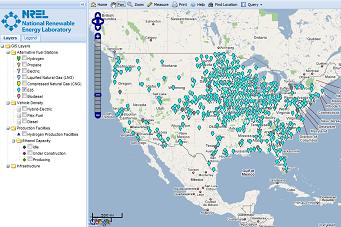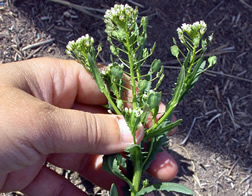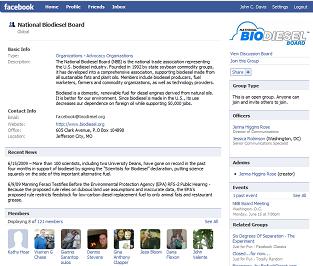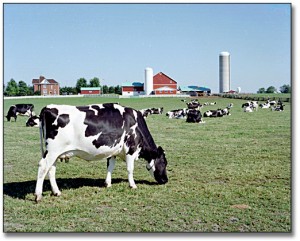 Don’t know where to buy your biodiesel? Un-enlightened about ethanol’s whereabouts? Perplexed about propane? Well, a new tool from the National Renewable Energy Labs and Google could help you be a more active alternative fuel buyer.
Don’t know where to buy your biodiesel? Un-enlightened about ethanol’s whereabouts? Perplexed about propane? Well, a new tool from the National Renewable Energy Labs and Google could help you be a more active alternative fuel buyer.
Ecogeek.org reports that the two have launched TransAtlas, an interactive map that shows all existing and planned alternative fuel stations across the country:
The mapping tool allows you to view each type of fuel station as a layer, so you can view one at at time or all fuel types simultaneously. The seven alternative fuels mapped are hydrogen, propane, electric, liquified natural gas, compressed natural gas, E85 and biodiesel.
The tool also allows you to view vehicle density layers for hybrid-electric, flex-fuel and diesel cars. Electric and hydrogen stations are far behind fuels like E85 and biodiesel, but their locations correspond pretty neatly with the areas where those cars are being driven. I’d like to think that if more of those types of stations are built in more areas, the corresponding vehicles will follow.
This should help solve the problem that too many well-intentioned, potential alternative fuel-using people are having: not being able to find their favorite green fuel.


 Missouri’s biggest utility has struck a long-term agreement with an Iowa wind farm to buy enough power for 26,000 homes.
Missouri’s biggest utility has struck a long-term agreement with an Iowa wind farm to buy enough power for 26,000 homes. The deal satisfies a commitment to add 100 megawatts of renewable generating capacity by 2010, AmerenUE said.
The deal satisfies a commitment to add 100 megawatts of renewable generating capacity by 2010, AmerenUE said. About three weeks ago,
About three weeks ago,  While it might have been something that farmers have tried to keep out of their fields, stinkweed could prove to be a successful product for those growing feedstocks for biodiesel.
While it might have been something that farmers have tried to keep out of their fields, stinkweed could prove to be a successful product for those growing feedstocks for biodiesel. On the heels of its successful launch on
On the heels of its successful launch on  With more than 100 million users logging on at least once each day, Facebook is the fourth-most trafficked Web site in the United States. Increasingly more people are turning to the Internet for information than any other media source – including television and newspapers.
With more than 100 million users logging on at least once each day, Facebook is the fourth-most trafficked Web site in the United States. Increasingly more people are turning to the Internet for information than any other media source – including television and newspapers. In recent weeks, the city of Sacramento has added 25 E85 fueling locations. The city is now boasting as being the nation’s ethanol epicenter, at least west of the Mississippi.
In recent weeks, the city of Sacramento has added 25 E85 fueling locations. The city is now boasting as being the nation’s ethanol epicenter, at least west of the Mississippi.  The
The In addition to the launch of the ethanol refinery, the government has developed an aggressive plan to expand the country’s sugar production from 800,000 tons per year to over 10 million tons per year. The increased sugar production could support both increased sugar exports and approximately 18 new ethanol plants.
In addition to the launch of the ethanol refinery, the government has developed an aggressive plan to expand the country’s sugar production from 800,000 tons per year to over 10 million tons per year. The increased sugar production could support both increased sugar exports and approximately 18 new ethanol plants. Cows often get a bad rap for emitting methane – a global warming gas. Maybe we shouldn’t be so hard on
Cows often get a bad rap for emitting methane – a global warming gas. Maybe we shouldn’t be so hard on  San Jose wants to become energy independent but they’re not going about it in a traditional fashion. Instead, they hope to be the first city in the U.S. to generate its electricity through an organics-to-energy biogas facility. Should this plant come to fruition, it would be sited on a 40-acre site near the San Jose/Santa Clara Water Pollution Control Plant and convert 150,000 tons of organic waste into energy. The plant will be constructed and operated by Zanker Road Biogas.
San Jose wants to become energy independent but they’re not going about it in a traditional fashion. Instead, they hope to be the first city in the U.S. to generate its electricity through an organics-to-energy biogas facility. Should this plant come to fruition, it would be sited on a 40-acre site near the San Jose/Santa Clara Water Pollution Control Plant and convert 150,000 tons of organic waste into energy. The plant will be constructed and operated by Zanker Road Biogas.